Kingdom Plantae Family Apocynaceae Genus Cynanchum Higher classification Vincetoxicum | Order Gentianales Subfamily Asclepiadaceae Scientific name Vincetoxicum rossicum Rank Species | |
 | ||
Similar Cynanchum louiseae, Cynanchum, Asclepiadoideae, Hypena opulenta, Apocynaceae | ||
Cynanchum rossicum is a flowering plant of the milkweed family. It is a perennial herb native to southern Europe and is a highly invasive plant growing in all of the Eastern United States, in the mid west, and southern Ontario, Quebec, and British Columbia. It has several common names including swallowwort, pale swallowwort, and dog-strangling vine.
Contents
- Leaf Characteristics
- Flower Characteristics
- Root Characteristics
- Reproduction
- Survival
- Distribution
- Invasive species
- References
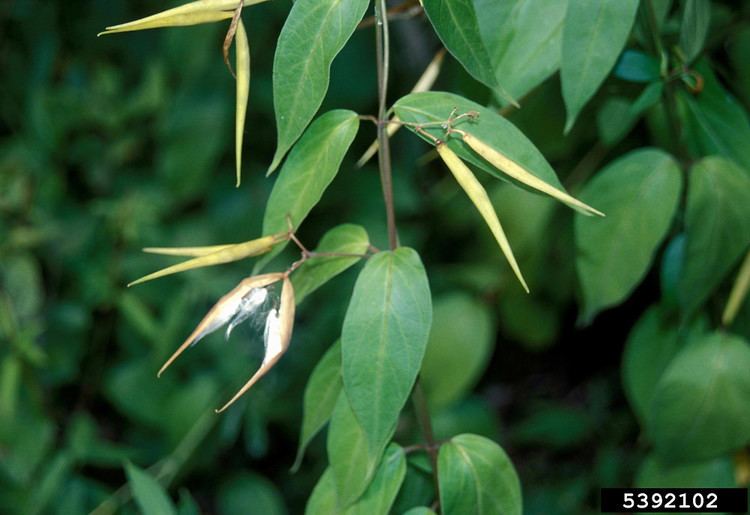
Leaf Characteristics
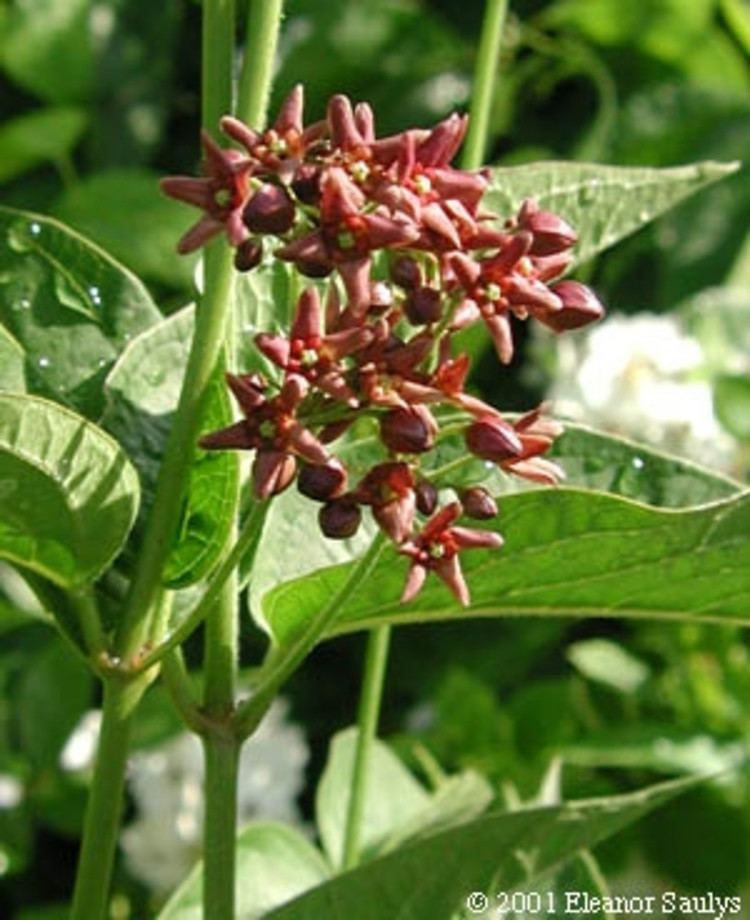
The leaves of the pale swallowwort are larger when they are closer to the stem and decrease in size as they move away from the stem. They are in the shape of an ellipse or an oval and contain smooth margins and major veins underneath. The glossy, dark green leaves grow opposite on the stem and are ovate to elliptical. The flowers appear near the top of the plant and grow on stalks that come from the leaf axils.
Flower Characteristics
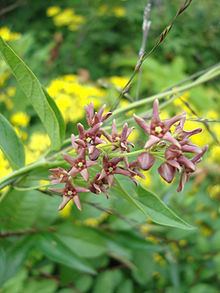
The buds of the flowers have a pointed apex and are ovoid to conoidal. Also, petals that are unopened are twisted. The diameter of the flowers is 5–7 mm and they are 5-parted. Some of the petals are 3–5 mm in long and do not have hair. The margins of the petals are 0.05–0.15 mm wide and they are typically translucent. The 5-lobed corona is typically pink, red-brown or maroon, which is the same color as the corolla. The corona is sometimes seen as a lighter pink, orange or yellow. The fruits of the Cynanchum rossicum are 4–7 cm long and each flower typically contains two fruits. The seeds of the fruit are oblong and are either concaved or flattened on one side and convex on the other side. The seed color varies from light to dark brown. Each stalk has 5 to 20 flowers. The flowers are dark purple or dark brown.
Root Characteristics
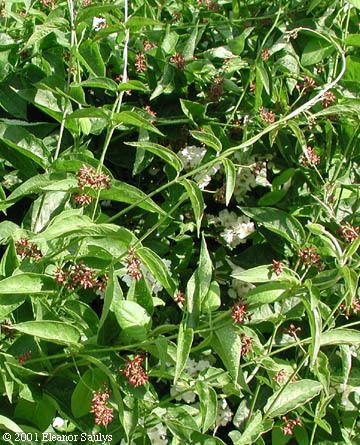
It is a twining vine that grows to heights of 60–200 cm (2.0–6.6 ft). The roots of the pale swallowwort are thick. The rootstalk makes a rhizome shape with its roots. Stems are found intertwined in dense patches of plants. They will grow onto other plants when they are alone in order to have structural support. After a year of growth, the stem turns light brown and resembles a decaying stem and stops growing.
Reproduction
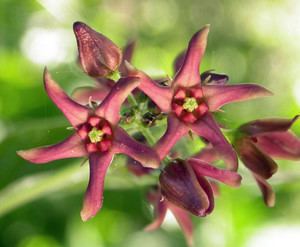
Cynanchum rossicum reproduces by spreading its seeds through wind dispersal and through vegetative production. Since it is multiembryonic, it allows the seeds to cover more ground and allows the pale swallowwort to have a high reproductive rate. Intermediate light is the best light source for the pale swallowwort to reproduce and grow. Though that light is not necessarily required, it does produce the best outcome. Typically this invasive species is found in dense vegetation, which allows it to rapidly grow with its multiembryonic seeds. Since this invasive species is a vine, it grows best when it attaches to other plants and uses it as a support beam.
Survival

These seeds are polyembryonic and typically contain two embryos but there have been observations of up to eight embryos. When there are multiple embryos released into an environment, they have a greater chance of surviving when damage is done to the environment. This makes the survival rate of the pale swallowwort to be very high and in there lies the problem as to why this invasive species is problematic.
Distribution
Cynanchum rossicum is problematic in North America. Specifically it is problematic in the Great Lakes Basin where its invasive ways are disturbing native birds and plants in the area. It is a possible threat to the butterflies as well because it interferes with the native hosts present in the area. If the native species is taken over by the pale swallowwort, it may affect the butterflies that use those plants for habitats. There are not any control methods that stop the Cynanchum rossicum from spreading. In Canada, the release of a moth, (Hypena opulenta), which feeds on the plant, has been authorized in 2013. It keeps growing at an extremely fast rate and invading environments in North America. It is found in Michigan, Pennsylvania, southern Ontario, Missouri, Kansas, and in New York.
Invasive species
C. rossicum is a highly invasive plant growing in all of the Eastern United States, and commonly found in the mid west. It is also found in Southern Ontario, Quebec, and British Columbia. It is commonly found along with poison ivy plants.
